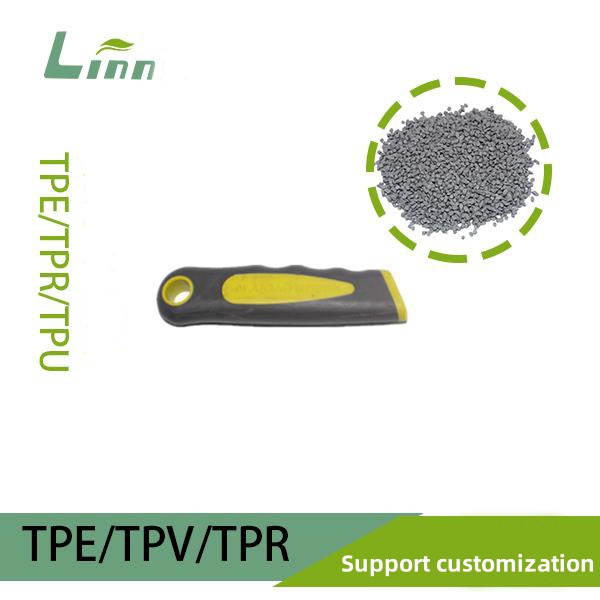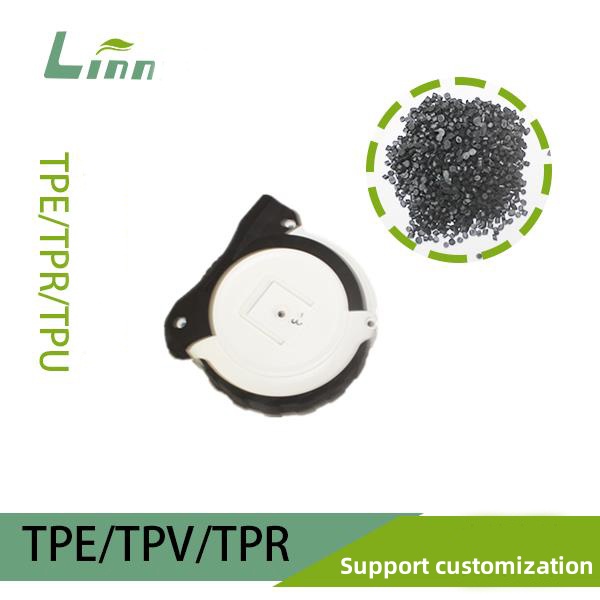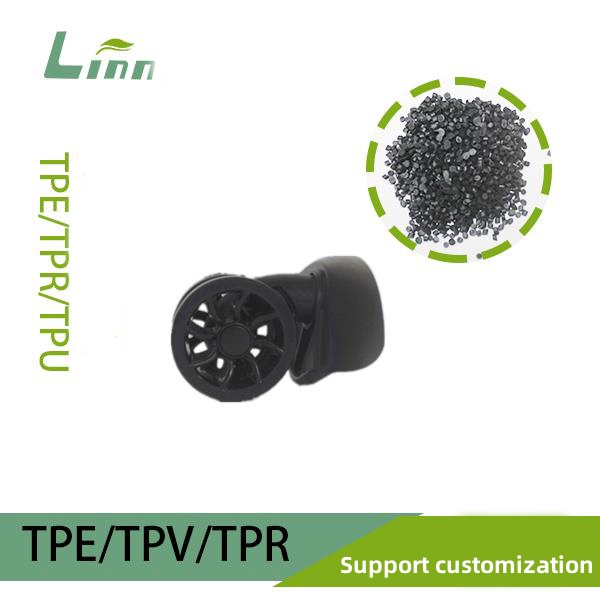As winter approaches and temperatures plummet, many users of TPE hoses might notice that their hoses aren’t as flexible as they were in summer, sometimes even feeling stiff and less manageable. Having worked in the plastics industry for years, I understand the behavior of TPE (thermoplastic elastomer) hoses under varying conditions. Today, I’m here to dive deep into whether TPE hoses harden in winter, why this happens, and how to address it to ensure a smooth user experience.
Why Care About TPE Hoses Hardening in Winter?
TPE hoses are widely used in medical, food processing, and industrial applications due to their flexibility, corrosion resistance, and lightweight nature. However, in winter, especially in colder regions, users often report that these hoses stiffen and lose elasticity, making them harder to handle. This can not only affect usability but also lead to cracking or a shortened lifespan. Understanding how TPE hoses perform in low temperatures and how to mitigate these issues is a common concern for many users.
In this article, I’ll break down the properties of TPE materials, explain why they harden in cold weather, and share practical tips to tackle the problem. My goal is to help you use TPE hoses confidently, even in the coldest months.

Basic Properties of TPE Hoses
TPE, or thermoplastic elastomer, is a material that combines the elasticity of rubber with the processability of plastic. Its molecular structure makes it soft and flexible at room temperature, but its physical properties can shift with temperature changes. Compared to traditional PVC or silicone hoses, TPE hoses offer several advantages:
High Flexibility: Soft and easy to bend at room temperature.
Eco-Friendly and Safe: Free of plasticizers, meeting food-grade and medical-grade standards.
Good Weather Resistance: Resistant to UV rays and certain chemical corrosions.
Easy to Process: Can be extruded or molded into various shapes.
However, TPE’s performance is sensitive to temperature. In cold environments, the molecular chains become less mobile, causing the material to stiffen. This is why TPE hoses may feel less pliable in winter.
Why Do TPE Hoses Harden in Winter?
To understand why TPE hoses harden in cold weather, let’s look at the issue from a materials science perspective. Here are the main reasons:
Glass Transition Temperature (Tg)
TPE materials have a critical property called the glass transition temperature (Tg). Below this temperature, the molecular chains in TPE become rigid, losing their elasticity and causing the material to harden. The Tg of TPE varies by formulation, typically ranging from -40°C to -10°C. In winter, especially in northern regions, temperatures can approach or fall below this range, leading to stiff hoses.
Reduced Molecular Chain Mobility
At low temperatures, the movement of TPE’s molecular chains slows down, transitioning the material from a flexible “rubber-like” state to a rigid “glass-like” state. This reduces flexibility and may even make the hose brittle.
Formulation Differences
The performance of TPE hoses depends heavily on their formulation. Lower-cost TPE hoses may contain more hard-segment materials or fillers, which are prone to hardening in cold weather. High-quality TPE hoses, on the other hand, often include low-temperature-resistant additives to improve performance.
Environmental Factors
Beyond low temperatures, winter’s dry air and UV exposure can accelerate TPE material aging, further impacting flexibility.

How TPE Hoses Perform in Low Temperatures
To give you a clearer picture of TPE hose behavior in cold weather, I’ve compiled a table summarizing their typical performance at different temperatures:
| Temperature Range | Hose Behavior | Potential Issues | Recommendations |
|---|---|---|---|
| 10°C to 25°C | Soft, highly elastic, easy to bend | No significant issues | Use normally |
| 0°C to 10°C | Slightly less flexible, still usable | Mild stiffening, minor inconvenience | Light preheating, avoid sharp bends |
| -10°C to 0°C | Noticeably stiffer, reduced elasticity | Difficulty bending, risk of minor cracks | Store indoors, preheat before use |
| -30°C to -10°C | Very stiff, near glass-like state | High risk of cracking, difficult to use | Avoid use or switch to low-temperature hoses |
Note: Data is based on common TPE formulations; actual performance varies by product.
As the table shows, TPE hoses lose significant flexibility below 0°C. If your environment regularly dips below -10°C, standard TPE hoses may not be ideal.
How to Address TPE Hoses Hardening in Winter
Now that we know why TPE hoses harden in winter, what can we do about it? Based on my years of experience, here are practical solutions to keep your hoses functional:
1. Choose Low-Temperature-Resistant TPE Hoses
Some TPE hoses are formulated for cold environments, incorporating cold-resistant plasticizers or modifiers. These hoses have a lower Tg, maintaining flexibility at temperatures as low as -30°C or below. When purchasing, ask suppliers for low-temperature performance specs, such as Tg or minimum operating temperature.
2. Store Indoors to Avoid Prolonged Exposure
Prolonged exposure to cold can make hardening inevitable. Store TPE hoses indoors at temperatures above 10°C. Before use, you can soak the hose in warm water (below 50°C) or use a hairdryer on low heat to restore flexibility.
3. Avoid Excessive Bending or Stretching
In cold weather, TPE hoses become more brittle, and excessive bending or stretching can cause cracks. Handle hoses gently, avoiding sharp bends. If securing the hose, use clips or supports to minimize stress points.
4. Regular Inspection and Replacement
Cold temperatures can accelerate TPE hose aging, especially for hoses used long-term. Regularly check for cracks, whitening, or hardening. Replace damaged hoses promptly to ensure safety and performance.

5. Consider Alternative Materials
If your environment consistently reaches extreme cold (e.g., below -20°C), standard TPE hoses may struggle. Consider alternatives like silicone hoses or polyurethane (TPU) hoses, which typically perform better in low temperatures.
Comparing TPE Hoses to Other Materials in Low Temperatures
To help you choose the right hose, I’ve created a comparison table of TPE hoses versus other common hose materials in terms of low-temperature performance:
| Material | Minimum Operating Temperature | Flexibility (Low Temp) | Cost | Applications |
|---|---|---|---|---|
| TPE | -30°C to -10°C | Moderate, prone to hardening | Moderate | Food transfer, medical, light industry |
| Silicone | -60°C | Excellent | Higher | Medical, food, high/low temp environments |
| TPU | -40°C | Good | Moderate to high | Industrial, pneumatic, outdoor use |
| PVC | -10°C | Poor, prone to cracking | Low | General piping, low-demand scenarios |
Note: Data is based on industry standards and testing; performance varies by formulation.
Silicone and TPU outperform TPE in low temperatures but come at a higher cost. For budget-conscious users, opting for a cold-optimized TPE formulation is a cost-effective solution.
Real-Life Case Study
Last winter, I worked with a client running a small food processing plant in Northeast China. They used TPE hoses to transfer liquid ingredients. In December, when temperatures dropped to -15°C, the hoses became stiff, complicating operations and even developing minor cracks. The client was frustrated, worried about the cost of replacing all their hoses.
After assessing their situation, I recommended the following:
Store hoses indoors to Perspective: Avoid prolonged outdoor exposure.
Soak hoses in warm water for 5 minutes before use to restore flexibility.
Upgrade to low-temperature TPE hoses with a Tg below -30°C.
The client followed these steps and reported significant improvements. They later invested in cold-resistant TPE hoses, which resolved the issue entirely. This experience reinforced the importance of matching materials to environmental conditions.

Frequently Asked Questions
To provide a more comprehensive guide, here are answers to common questions about using TPE hoses in winter:
Q1: Can TPE hoses regain flexibility after hardening?
A: Yes, as long as the hose hasn’t aged irreversibly or cracked, warming it (e.g., to room temperature or with mild heating) will restore molecular chain mobility, making it flexible again. Avoid heating beyond the hose’s tolerance (typically 50°C to 70°C).
Q2: How do I know if a TPE hose is suitable for cold environments?
A: Check the supplier’s technical specs, particularly the glass transition temperature (Tg) and minimum operating temperature. If unavailable, request a sample for testing in your environment.
Q3: What precautions should I take when using TPE hoses in winter?
A: Avoid sharp bends, inspect regularly for cracks or hardening, and store indoors. If transferring liquids, ensure the liquid isn’t too cold, as it can further lower the hose’s temperature.
Q4: Are TPE or silicone hoses better for winter?
A: Silicone hoses maintain better flexibility and weather resistance in cold weather, making them ideal for extreme conditions. However, TPE hoses are more cost-effective and sufficient for temperatures above -10°C with proper formulation.
Final Thoughts
So, will TPE hoses harden in winter? Yes, low temperatures reduce the mobility of TPE’s molecular chains, causing stiffness. However, by choosing cold-resistant formulations, storing hoses properly, and using them carefully, you can minimize or eliminate this issue. As someone who’s seen the challenges of material performance firsthand, I know how critical it is to align your hose choice with your environment. I hope this guide equips you with the knowledge to keep your TPE hoses performing well, even in the coldest seasons.
Got more questions about TPE hoses, like specific purchasing tips or usage tricks? Feel free to share them below! Let’s work together to find the best hose solutions for winter.
References:





